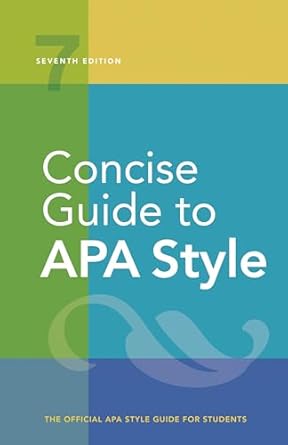[toc]
effective data presentation tables and figures guide
Concise Guide to APA Style: 7th Edition (OFFICIAL)
Page 157 Review
The Art of Data Presentation: A Critical Review of Tables and Figures
In academic writing, particularly within the sciences, the effective presentation of data is paramount.
The excerpt from the ebook underscores the delicate balance between textual explanation and visual aids, specifically tables and figures.
It cautions against overuse, stating, “Readers may lose track of your message if there are a large number of tables and figures but only a small amount of text.” This highlights a crucial point: visual elements should enhance, not overwhelm, the narrative.
The Pitfalls of Over-Reliance on Visuals
The text rightly points out that graphical presentation isn’t always the optimal solution.
Simple statistical results, such as those from a single significance test, can be conveyed concisely within the text itself.
For instance, the ebook provides examples like: “The one-way ANOVA, F(1, 136) = 4.86, MSE = 3.97, p = .029, n?= .03, demonstrated…” and “Scores on the insomnia measure (M = 4.08, SD = 0.22) were…” These succinct presentations are efficient and avoid unnecessary visual clutter.
When Tables and Figures Shine
However, the ebook acknowledges the value of tables and figures in specific contexts. “A table or figure is an effective choice to present the results of multiple statistical tests or many descriptive statistics (e.g., when reporting the results of numerous ANOVAs or summarizing participant demographic data).” This is where visual aids truly excel – in consolidating and presenting complex data sets in an accessible format.
The ability to combine smaller visuals into larger, more comprehensive ones is also emphasized, streamlining the presentation and enhancing understanding.
The Symbiotic Relationship Between Text and Visuals
The excerpt stresses the importance of the relationship between the text and the visual elements. “Consider how the table or figure augments or supplements the text.” A figure illustrating a theoretical model discussed in the text serves as a valuable visual summary.
However, the ebook rightly warns against redundancy: “tables or figures that are redundant with the text may be unnecessary.” The goal is to create a synergistic effect, where the visuals and the text work together to communicate the data in the most effective manner.
Formatting for Clarity and Consistency
The ebook also delves into the formatting of tables and figures, emphasizing the importance of adhering to established style guidelines (presumably APA Style, given the context). “Tables and figures follow the same structure: They have a table or figure number, a table or figure title, a body (for tables) or an image (for figures), and table or figure notes as needed.” This standardization ensures consistency and readability, allowing readers to easily interpret the presented data.
The Importance of Proper Table Creation
The excerpt specifically addresses table creation, advocating for the use of word-processing program’s table functions. “Use the tables function of your word-processing program to create tables.
If you copy and paste tables from another program (e.g., SPSS, Excel) into your word-processing program, you may need to adjust the formatting to comply with APA Style guidelines.
Do not use the tab key or space bar to manually create the look of a table; this approach is prone to alignment errors.” This advice highlights the importance of precision and avoiding manual formatting, which can lead to inconsistencies and errors.
Figure Creation: Software and Resolution
The excerpt touches upon the software used for figure creation, acknowledging the wide range of options available. “Figures can be created in various ways using many programs, includ- ing Excel, PowerPoint, Photoshop, Illustrator, MATLAB, Inkscape, and others.
Check with your assigning instructor or institution for any requirements or restrictions on acceptable programs for designing your figures.” While the specific software may vary, the ebook emphasizes the importance of high-quality output. “Regardless of the program used to create the figure, the output should be of sufficient resolution to produce high-quality” This is critical for ensuring that figures are clear and legible in the final publication.
The Ultimate Goal: Effective Communication
Ultimately, the ebook emphasizes that the most important consideration is effective communication. “Most impor- tant is how you can best communicate your data in an understand- able and meaningful manner.” The choice between textual and visual presentation, the formatting of tables and figures, and the software used for creation should all be guided by this principle.
Data should be presented in a way that is both accurate and easily accessible to the intended audience.
Conclusion
In conclusion, the excerpt provides valuable guidance on the effective use of tables and figures in academic writing.
It advocates for a balanced approach, emphasizing the importance of using visuals strategically to enhance, rather than replace, textual explanations.
By following these guidelines, researchers can ensure that their data is presented in a clear, concise, and impactful manner.
Buy full ebook for only $18: https://www.lulu.com/shop/american-psychological-association/concise-guide-to-apa-style-7th-edition-official/ebook/product-rmzpq54.html?page=1&pageSize=4
Effective Data Presentation Tables And Figures Guide
Read more: APA Abbreviations Guide: Mastering Academic Writing

